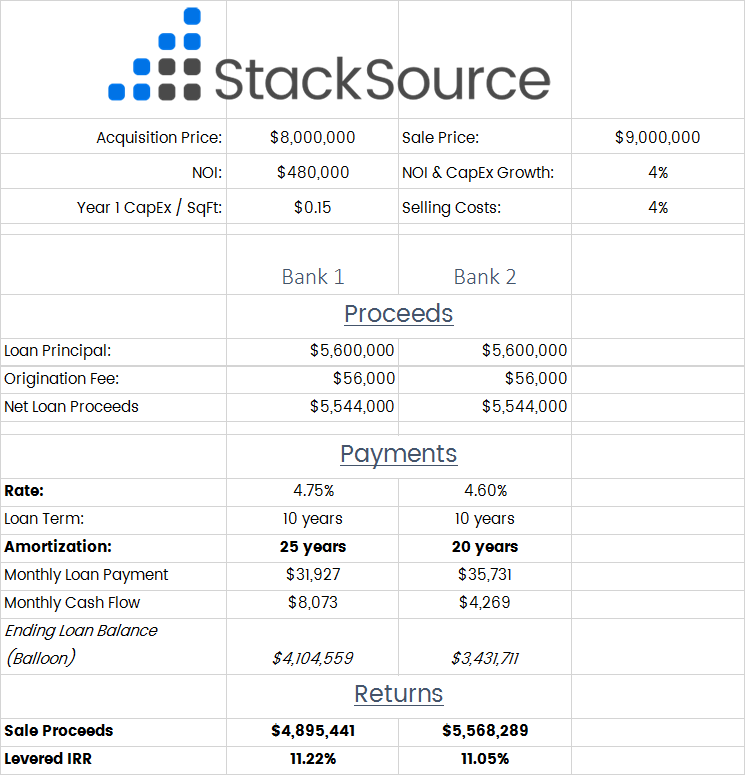

Commercial Mortgages: Look at Amortization First!

Congratulations! You received more than one commercial mortgage quote. Now it’s time to dig in and choose the right loan.
You’ll be tempted to look at the Interest Rate first. Don’t.
The first thing you should be looking at is the Amortization.
The power of amortization
In a residential mortgage scenario, the typical choice is simple: take a 15 year fixed loan vs a 30 year fixed loan. You can pay off the loan off more quickly, stretch it out. In either case, the amortization of the loan (the period of time it would take to pay off the principal balance) is matched to the loan term.
In commercial lending, that’s usually not the case. When the amortization period of the loan is longer than the payment term, there is a loan balance left at maturity — sometimes referred to as a balloon payment. If you have a 10 year term, but the amortization is 25 years, you’ll essentially have 15 years of loan principal due at the end.
Now, the reason why it’s powerful: the longer the amortization, the less principal you are required to pay every month, so you are preserving cash flow.
Let’s look at a couple of examples:
When 8 is less than “5”

Let’s say you’re acquiring a property for $7.5M, and there is an existing NOI of $450k per year. You receive a quote from both a private bridge lender and from a bank. Of course, the bank’s interest rate is lower. Assuming either lender can bridge you for three years on the property, but the bridge lender offers Interest Only payments (I/O), and the bank puts you on a 20-year amortization schedule, which is the better option here?
Well, in the bank scenario, you’re paying down loan balance, so you can recognize a larger gain upon refinancing or selling the property in three years. However, your cash flow is GONE — you’re actually putting a few dollars back into the property every month over the course of the loan (assuming NOI is steady). In the bridge loan scenario, even with an 8% rate, you’ve carved out $2,500 per month in free cash flow. If you need immediate cash flow and you can’t afford to defer your gains until later, the private lender is the better option here.
Choosey projects choose Cash Flow
Alright, let’s go a little bit deeper. Here’s a project to hold over a 10 year period, and both loan options are amortizing. But the “cheaper” loan (by interest rate) amortizes over 20 years, with the higher rate amortizing over 25 years.

As expected, paying down the loan more quickly leads to more proceeds when you sell the property after 10 years. However, the Levered Internal Rate of Return, a metric that takes both cash flow and exit into account, is higher when the amortization is stretched out. It’s often beneficial to put more money in your pocket every month, rather than waiting for a big pay-day later. You can re-invest proceeds into other properties or diversify into something else entirely.
Take it deal by deal
Will a longer amortization always be the right answer for every deal? No, of course not. But when looking at multiple loan options for your property investment, it’s a good idea to keep the amortization period top of mind. You may be surprised by how much it determines the optimal path for your deal.




Comments (1)
Is the blog missing certain charts. I am not following how you calucalated the cashflow?
Marlon Long, about 7 years ago